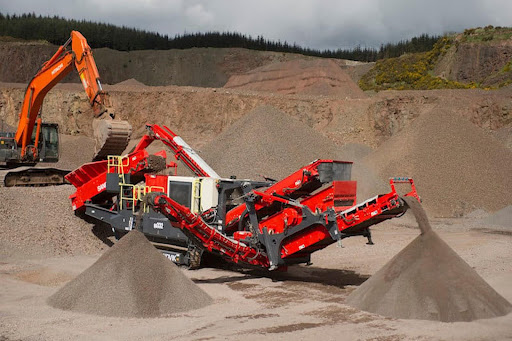Mining has always been a cornerstone of human civilisation, providing essential resources for various industries worldwide. Over the years, technological advancements have transformed the mining landscape, making operations safer, more efficient, and environmentally sustainable. In this blog post, we delve into the latest innovations in mining equipment, exploring how cutting-edge technology is revolutionising how minerals are extracted from the earth.
Autonomous Vehicles
One of the most significant advancements in mining equipment technology is the integration of autonomous vehicles into mining operations. These vehicles, ranging from haul trucks to drilling rigs, are equipped with advanced sensors and artificial intelligence systems to navigate complex mine environments safely and efficiently. By removing the need for human operators in hazardous areas, autonomous vehicles improve safety and increase productivity by operating around the clock without fatigue.
3D Printing in Mining Equipment Manufacturing
3D printing technology has revolutionised the manufacturing process of mining equipment. Traditional manufacturing methods often involve long lead times and high costs for custom parts. However, with 3D printing, mining companies can quickly produce complex components on demand, reducing downtime and minimising inventory costs. Additionally, 3D printing allows for the creation of lightweight yet durable parts, optimising equipment performance and fuel efficiency.
Advanced Sensors and IoT Integration
Integrating advanced sensors and Internet of Things (IoT) technology is another game-changer in the mining equipment industry. These sensors, embedded throughout mining machinery, collect real-time temperature, pressure, and equipment performance data. By leveraging this data, mining companies can implement predictive maintenance strategies, identifying potential equipment failures before they occur and minimising downtime. IoT integration also enables remote monitoring and control of equipment, allowing for more efficient operations and resource allocation.
Enhanced Safety Features
Safety is paramount in the mining industry, and recent innovations in mining equipment have focused heavily on improving safety features. Technologies such as collision avoidance systems, proximity detection sensors, and fatigue monitoring tools help prevent accidents and injuries in the workplace. Additionally, virtual reality (VR) and augmented reality (AR) simulations train miners in realistic, risk-free environments, improving their skills and awareness of potential hazards.
Green Mining Solutions
In recent years, the mining industry has increasingly emphasised sustainability, prompting the development of green mining solutions. These innovations focus on reducing the environmental impact of mining operations, including the equipment used in the process. Electric vehicles (EVs) have emerged as a promising alternative to traditional diesel-powered machinery, offering lower emissions and reduced noise pollution. Additionally, renewable energy sources such as solar and wind are integrated into mining equipment, providing clean operation power and reducing reliance on fossil fuels.
Data Analytics and Machine Learning
Data analytics and machine learning algorithms are increasingly applied to mining equipment to optimise performance and efficiency. By analysing vast amounts of data collected from sensors and equipment telemetry, these algorithms can identify patterns and trends that may indicate areas for improvement. For example, predictive maintenance algorithms can accurately predict equipment failures, allowing maintenance teams to address issues proactively before they lead to costly downtime. Furthermore, machine learning algorithms can optimise equipment settings and operating parameters in real-time, maximising productivity while minimising energy consumption and wear and tear.
Remote Operation Centers
Another significant trend in mining equipment innovation is the establishment of remote operation centres (ROCs). These centres leverage advanced communication technologies, such as high-speed internet and satellite connections, to monitor and control operations remotely from centralised locations. This setup allows mining companies to optimise resource allocation, streamline operations, and enhance safety by reducing the need for personnel physically present at the mine site. ROCs also facilitate collaboration between experts in different regions, enabling real-time decision-making and problem-solving.
Wearable Technology for Workers
In addition to advancements in mining equipment, there have been notable developments in wearable technology designed to enhance the safety and productivity of workers in the mining industry. Wearable devices, such as intelligent helmets and vests with sensors and communication capabilities, provide miners real-time data on environmental conditions, equipment status, and physiological metrics. This information enables miners to make informed decisions, respond quickly to hazards, and avoid dangerous situations. Furthermore, wearable technology can improve communication and coordination among team members, fostering a safer and more efficient work environment.
Advanced Material Handling Systems
Efficient material handling is crucial for optimising productivity and minimising downtime in mining operations. Recent innovations in material handling systems have focused on improving the efficiency and reliability of transporting ore and waste materials within mines. One notable advancement is the development of conveyor belt systems equipped with intelligent controls and monitoring capabilities. These systems can automatically adjust speed, trajectory, and load distribution to optimise material flow and prevent bottlenecks. Additionally, advancements in robotics and automation have enabled the deployment of robotic loaders and haulage trucks, further streamlining the material handling process while reducing the need for human intervention in hazardous areas.
Conclusion
The mining industry is experiencing a technological revolution driven by equipment design and manufacturing innovations. These technologies, from autonomous vehicles to 3D printing, advanced sensors, and enhanced safety features, reshape mining operations worldwide. By embracing these cutting-edge advancements, mining companies can increase productivity, reduce costs, and improve safety standards, ultimately paving the way for a more sustainable and efficient future.




